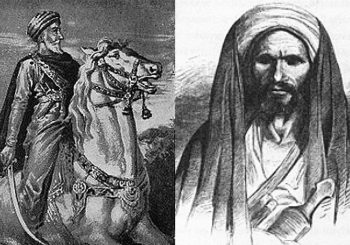While working at a South Sinai camp in 2015, Donia Genena recalls how one of the camp’s guests left behind a fire poi, which comprises two round weights tethered by a string.
Intrigued, she picked them up and attempted to understand what they were, when one of the camp’s guests, a young Indian woman, approached her and asked to use them.
The guest began swaying them around in harmonious fashion as Genena watched, her curiosity growing with each rhythmic movement. Genena asked her what this type of dance was called, to which the woman responded with: “Poi Spinning.”
It may have seemed like a random sequence of events at the time, but it resulted in a ripple effect that helped Genena discover her passion for a unique art form for the first time; a passion that would soon encourage her to teach poi spinning to more than 200 individuals.
“I got hooked immediately,” she recalls.
What is Poi Spinning?
Poi spinning is a form of dance characterized by weights (or poi balls) that are tethered together and swung around to form different patterns.
The dance originated in the Maori culture in New Zealand; it is believed that Maori women practiced poi spinning to keep their hands flexible for weaving, while men practiced it to improve their coordination and strength for battle. In recent years, poi spinning quickly became popularized throughout the world, including Egypt.
Over time, it developed to include LED poi balls and even ones that are set on fire, which offer spectators an enchanting view of the different patterns created by the rhythmic movements.
View this post on Instagram
Love at First Sight
Immediately after seeing the young woman’s performance, Genena began looking up poi spinning online and started teaching herself how to perform using YouTube tutorials.
“I soon realized that poi spinning is a language in itself, just like a guitar or anything else. Once you understand this language, you can begin to innovate,” she explains.
She spent a year teaching herself, and a remarkable milestone in her journey was when she first performed with the fire poi, where the tethered weights are actually set on fire, providing both the performer and the audience with an exhilarating experience.
When asked whether she had been scared at the prospect of literally playing with fire, Genena responds: “It was exciting rather than terrifying because I waited until I was very skilled to try using the fire poi. Of course, I sustained some injuries from it throughout the past five years, like a burnt T-shirt or some burnt hair, but thankfully nothing major.”
View this post on Instagram
To Genena, poi spinning represents more than just a type of dance; it represents the importance of trying to learn new skills and habits, in addition to adding a creative element to any social event.
She describes poi as a “gateway to other art forms,” mainly because it relies on coordination and represents the fundamentals of practicing anything and excelling at it at any age. In fact, learning poi is what eventually encouraged her to begin learning how to play guitar.
The Poi School
In 2016, Genena began teaching others on an informal basis. Her students kept telling her to start her own school to meet the growing demand for learning this captivating art form, which Genena finally did in 2018 by establishing her own poi spinning school. She simply called it The Poi School since no one else in Egypt had ventured into teaching this art form before her.
Perhaps what pushed her to formalize her poi instruction was when she got her first poi spinning performance job, where she had to find 15 other poi spinners for a group performance by the Red Sea at Sahl Hasheesh.
View this post on Instagram
The problem was that there weren’t many poi spinners in Egypt at the time, so Genena took the risk of agreeing to the job and then scouting to find (and train) her fellow spinners. In the span of two weeks, she had her 15 performers ready and after two months of training, the performance was a great success.
“All the spinners were trained from scratch, except for Karim and Roxy, two poi spinners who were already performing in Alexandria,” she explains.
To date, roughly 250 students have graduated from The Poi School.
Localizing an Art
One of the biggest achievements resulting from the establishment of the poi school was how it enabled more Egyptians to work as professional poi spinners.
“We penetrated the poi fire show market, which was previously dominated by foreigners, especially in the case of performances done by women. Now, there are a lot of Egyptian women performing with the fire poi in ads, songs, and gigs across Egypt,” Genena says proudly.
View this post on Instagram
Her students are characterized by how they respect the art form and do more than just spin the weights around; they study tactics and memorize routines and therefore manage to tackle it from a professional aspect.
Observing the unique patterns that form when a professional poi spinner takes the stage, it is clear that it is an art form that truly does warrant respect. Each spinner finds a way to make their performance their own, and watching Genena perform is an inspiring lesson in how one can achieve remarkable things when driven by passion and eagerness to excel.







Comments (2)
[…] Source: https://egyptianstreets.com/2021/11/07/meet-the-woman-who-brought-professional-poi-spinning-to-egypt… […]
[…] Source: https://egyptianstreets.com/2021/11/07/meet-the-woman-who-brought-professional-poi-spinning-to-egypt… […]